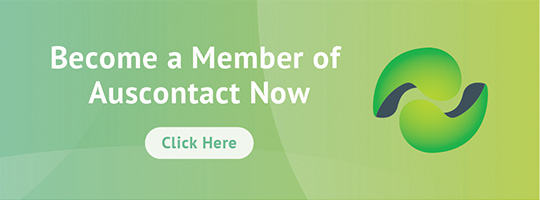We all know the COVID pandemic accelerated the global shift toward remote work, transforming the way businesses operate across industries. For contact centres in Australia, this was a game changing moment, where previously considered impossible proved to be not only possible but effective. Now that the dust has settled, what are we seeing in contact centres, what are the predictions for the next 12 months, and have we been able to reach a middle ground that works for all stakeholders?

When the pandemic hit, contact centres faced an unprecedented challenge: how to maintain uninterrupted customer service while ensuring the safety of employees. The solution was remote work. Overnight, agents transformed their living rooms into mini contact centres, equipped with headsets, laptops, and a reliable internet connection.
While the transition was initially met with scepticism, it soon became clear that remote work in the contact centre environment was not only feasible but efficient and organisations transformed their operating models with great results. Reduced overhead costs, increased agent productivity, and the ability to tap into a broader talent pool were some of the things that organisations were tapping into. Some embraced these opportunities, strategically planning for reduced ‘buildings’ as leases were up for renewals, rethinking location strategies and starting new conversations about workforce flexibility.
However, remote work also brought its own set of challenges. Contact centres had to overcome concerns related to data security, quality control, agent engagement, visibility of talent for promotion or projects, and overall performance, which some organisations were reporting had started to decrease. Monitoring, coaching, and professional development became seemingly more complex when they employees weren’t physically present. There were also concerns about maintaining the company culture and fostering a sense of belonging among remote staff that was creeping into conversations.
A middle ground was fast emerging however as one that appeared to be a good compromise for both organisations and employees. This concept of a hybrid working model that balanced the benefits of remote work with the need for in-office collaboration and oversight. The hybrid model would offer employees the flexibility to work remotely part of the time and come to the office as needed. This accommodates agents who prefer the comfort of their home office while ensuring they connect with their teams through anchor days or in office days when required.
In-office days could then be used for team meetings, training sessions, quality assurance and coaching reviews. Whilst some organisations are doing these well regardless of where their employees are, those that have continued to operate the ‘same old way’ were always going to struggle making these things work well through a virtual set up.
Some organisations have utilised this changed operating model to challenge and invest in their leaders, challenging them to identify new ways to engage, to drive performance and connect with their teams. Regular virtual team-building activities, town hall meetings, and communication platforms have helped bridge the gap between remote and in-office agents. Leaders have needed to be creative and deliberate in their attempts to build or strengthen culture, it has required them to look outside what has always worked and try something new. Those that successfully rethink their leadership approach, are more likely to support either a hybrid model approach or a model of choice when it comes to where people work from.
Where organisations are relying on what they have always done, they are very quick to call out that working from home is not working, and push for an increased presence in the workplace.
Whilst organisations enjoyed the flexibility of increased talent pools during covid and with a fully remote working model, shifting back to mandated office days does impact this talent catchment. Whilst some employees are comfortable managing a long commute on occasion, for some this is simply not possible and does shift organisations back to a standard labour market, competing with everyone else for the same talent.
A critical aspect of the hybrid model within the contact centre environment is its impact on the agent experience and, by extension, customer service quality. Research shows that agents who have the flexibility to work remotely report higher job satisfaction, higher levels of satisfaction when it comes to work life balance, and lower burnout rates. Happier agents are more likely to provide excellent customer service, resulting in higher customer satisfaction.
Providing agents with a flexible work environment can help address one of the other big challenges that continues to impact contact centres, and that is attraction and retention rates. Research shows that a hybrid model within your employee value proposition will attract more staff. Furthermore, reducing attrition rates will help reduce the cost and disruption of hiring and training new staff.
The next challenge we have seen emerge, is how organisations are managing the communication of their position. Whether they want a full in office model, a mandated hybrid option, or are comfortable with a choice model, the misalignment between the messages that underpin these decisions and the employee experience when said decisions are being followed, is leaving employees frustrated.
Words such as collaboration, engagement, culture, and connections all sounded quite reasonable if communicating why organisations want you in three days a week, however when employees return to the office and there are only a handful of staff on the floor, or they spend a day without talking to others, and have never had any time out from their daily grind to collaborate with anyone, they are left frustrated. Many leaders report feeling uncomfortable pushing an organisational line to their teams, recognising that the messaging around why it made good sense to be back in the office, was not always matching up to what employees experienced, leading to disengagement and dissatisfaction.
On the surface, a hybrid model appears to provide the work-from-home debate with a middle ground in the contact centre environment – for now. However, there continues to be much talk about what the future holds, with CEO’s from some parts of corporate Australia on record as suggesting that employees will be asked to shift back to in office operations systematically over the next five years. Organisations who are providing a ‘choice’ model, continue to see strong performance results where they have invested in building the skills and capabilities of their leadership team, supporting, engaging, and driving performance in a totally new way.
Whatever your organisation has chosen to do when it comes to where your employees work, one thing is clear. All models need a modern and deliberate leadership strategy underpinning how it will work. Remote work needs strong leaders for it to be successful and without investing in that, you will not see the results that support organisational success or engaged employees.
As contact centres continue to navigate the ever-evolving landscape, the ability to build leaders who are capable of delivering results regardless of where your people are based will be crucial in shaping success in the years to come.










Comments are closed.